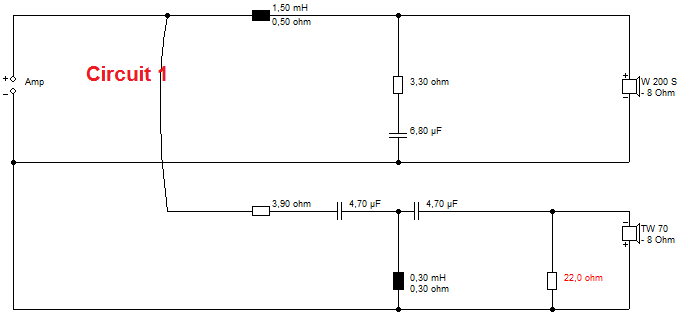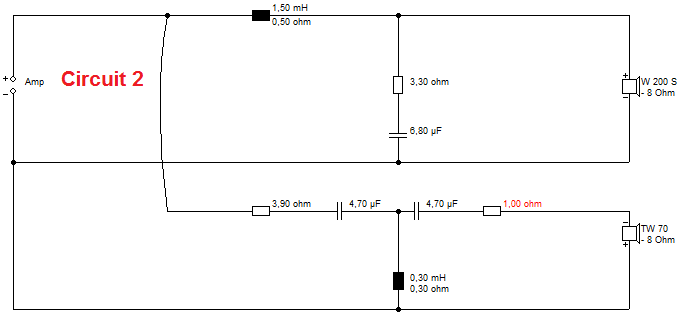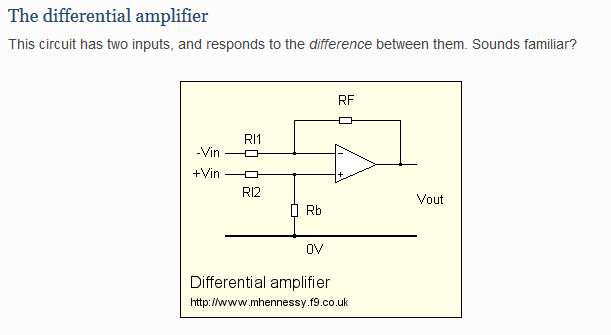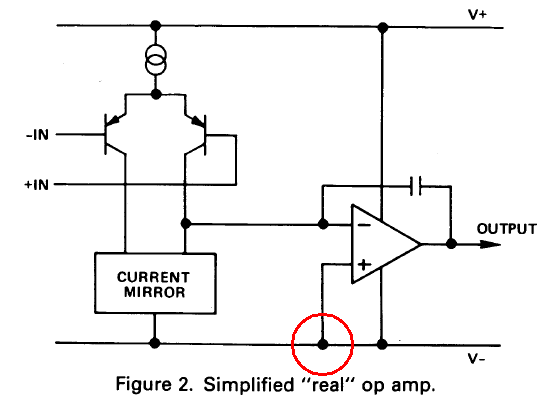Hi Steve,
-Chris
Dude! Get a grip on reality here. This tells me that you are unlikely going to give proper thought to what other folks say. It is probably not showing you in a positive light either!I must be to audio what Mozart was to Written Music. I mean, show me a speaker and a crossover, and I can hear it in my head.
-Chris
Any half way serious researcher will first make sure that indeed there is a difference.
Which is indeed the purpose of this experiment.
dave
That's not what I read throughout this thread. It's more 'I decided that there is a difference, now let's see if we can come up with something that could cause it'. Even if the overwhelming common sense suggests that it is highly unlikely that indeed there IS a difference.
I mean, making changes that have no effect on the signal driving the speaker, and stating you hear a difference? Dude?
Jan
I mean, making changes that have no effect on the signal driving the speaker, and stating you hear a difference? Dude?
Jan
That's not what I read throughout this thread.
I think that much of that tone comes from those trying to dismiss the validity of trying the experiment at all, not from Joe. He may not have handled things well, but AFAIK pushing forward on testing the validity of the idea has always been the main point. Joe does believe that it makes a difference.
I mean, making changes that have no effect on the signal driving the speaker, and stating you hear a difference? Dude?
Much of the same tone was (still is) raised against EnABL, but i have seen (and participated in) blind tests (some of them double blind) where it is clear that it does provide benefits. Besides hearing the difference myself (with the attitude going in, "how can those little spots make a difference"), watching listener's change in non-verbal response was very enlightening.
I expect the majority still dismiss it… again without trying it, just forging ahead on convential wisdom. There are some who claim to not hear it, but then something lie 10% of the population get no benefit from stereo.
Differences are at very low levels… and much of the discussion here is based on arguments only considering the gross response -- things like FR, but what is happening 30-50 dB down?
I have not heard any examples of what Joe is trying here, but i certainly believe that something could be happening and will not dismiss it before it has been given a proper try… anything less is a very close minded attitude and will not move us forward.
dave
I
Differences are at very low levels… and much of the discussion here is based on arguments only considering the gross response -- things like FR, but what is happening 30-50 dB down?
dave
As I said before, the absence (lower amount) of feedback current in presence of current drive removes (reduces) distortion (which we might call compression?). In this sense I always told that the high damping factor theory is flawed. It attempts to address one problem while creating another. It's nothing new. It might seem new because is not common.
The industry has gone the voltage drive way because it's generally cheaper and "easier".
Seems some acoustic testing with before and after results would do a lot to move this conversation forward. A simple FR comparison and also a phase plot and impulse response to show any real differences in phase response of the system. Seems about as simple a test as possible to show that something has actually changed.
Hi 45,
An industry will always go the less expensive route, all other things considered equal.
However, current drive can be dangerous if the load becomes disconnected. The output will instantly go to one supply. Even if the music is really low in level will fail in a dangerous way. Lawsuits, bad press. That will tend to form policy.
-Chris
An industry will always go the less expensive route, all other things considered equal.
However, current drive can be dangerous if the load becomes disconnected. The output will instantly go to one supply. Even if the music is really low in level will fail in a dangerous way. Lawsuits, bad press. That will tend to form policy.
-Chris
current drive can be dangerous if the load becomes disconnected. The output will instantly go to one supply.
Is that going to bother a diyer?
dave
Great if you are in a country where they sell these and have money to burn. Now if Joe offered 2 sets of speakers, one with all mods and one as new to be sent to burning amp this year for ears only demos we might get somewhere.
As IF I had money to burn? This is completely unreasonable. I am not forcing anybody to do anything, just doing DIY and sharing. Those are the rules.
If people prefer something no one will argue.
Now you have it right.
It's when they say 'it's better' you need to have some data.
You really shouldn't put words in my mouth like that. I have submitted a DIY design, that is all. People are free to build it and pass judgment. The most I have said is that there is a noticeable increase in clarity. There are enough speakers out there to experiment on, not just these inexpensive Ushers, and for people to draw their own conclusion. How can you possibly fault that, because IF that be the case, we may as well consign diy.audio to the dustbin?
Well, I am not, and I believe I have played entirely according to the rules and they don't include ideological warfare.
Please, Jason, if you should read this, take note.
As IF I had money to burn? This is completely unreasonable. I am not forcing anybody to do anything, just doing DIY and sharing. Those are the rules.
Like I said, that speaker is not sold in UK, so to test it would cost me quite a lot.
I didn't. I've said the same on many posts on this forum. Preference is just that. Claiming better requires some rigor IMO. Others may disagree but this is my view and I stick by it. However you HAVE said what the improvements are, so just like audioquest when they demo $3000 ethernet cables an expectation is set in the minds of people. Luckily for you parameters like 'clarity' have no instrumentation equivalent.You really shouldn't put words in my mouth like that. I have submitted a DIY design, that is all. People are free to build it and pass judgment. The most I have said is that there is a noticeable increase in clarity. There are enough speakers out there to experiment on, not just these inexpensive Ushers, and for people to draw their own conclusion. How can you possibly fault that, because IF that be the case, we may as well consign diy.audio to the dustbin?
Was this aimed at me? I can't see where I have been involved in anything of that sort.Well, I am not, and I believe I have played entirely according to the rules and they don't include ideological warfare.
Much of the same tone was (still is) raised against EnABL, but i have seen (and participated in) blind tests (some of them double blind) where it is clear that it does provide benefits. Besides hearing the difference myself (with the attitude going in, "how can those little spots make a difference"), watching listener's change in non-verbal response was very enlightening.
Hi Dave
Perfect example - while I am yet to be convinced re EnABL and naturally have a skeptical side that will have doubts, but I at least don't have a closed mind because I am yet to sample it.
If everything was subjected to instant judgment, much progress would never have been made.
Dave, you and I know it. I am at a loss at the people here can't see that? I find the attitude so limited, lacking adventure, lacking fun. As Niels Bohr said "Some things are so serious that one can only joke about them" - in that phrase is an attitude that is actually conducive to discovery. Tell a newborn baby that there is nothing new to discover, and you take away the very essence of life.
Judgment should never be dispensed hastily.
BUT... on the other hand I can understand it. We all would like to live in a safe world, we would all love to enjoy that luxury. So we also as human being can create constructs that makes us feel more safe, a bit like The Wall of Pink Floyd on a psychological level.
Sorry guys, just ribbing. 😀
Now it's my fault that Usher S520 is not sold in every country of the world?
How would I know?
The suggestion made was to "try it out rather than hash it out on DIYAudio". Simply put, the logistics of that assertion were called into question. That's it. Nothing to be defensive about.
Isn't the Usher just a pair of commodity drivers in a nice looking box? It seems that many could build a comparative set of speakers and try it out. Just list the driver models and I imagine those are available in many countries.
EnABL is not a totally strange notion in fact. Seems strange a few paint dots can affect things. But if you know what pouring oil on rough seas does, a thin surface film a few molecules thick has a huge effect on flattening huge waves.
I did a post a bit like Joe's where I found sonic effects in impedance equalisation. I found that you must keep the ultrasonic impedance reasonably low, hence the 22R shunt. 8R might be better for all I know.
http://www.diyaudio.com/forums/multi-way/284038-crossover-sounds-better.html
This one sounded good:

This one sounded rough:

Joe you were asking how common-mode distortion works in amplifiers, having dealt with transistor Class AB crossover distortion. It's noise from the Earth Rail that finds its way into the signal input. In truth there is no Earth Rail in Audio, just a centre 0V tap from the power supply.
A balanced differential amplifier can be very immune to it if the resistors are precisely matched, but in practise this isn't done in audio. One benefit of eliminating common-mode is you get less crosstalk between the channels.

I did a post a bit like Joe's where I found sonic effects in impedance equalisation. I found that you must keep the ultrasonic impedance reasonably low, hence the 22R shunt. 8R might be better for all I know.
http://www.diyaudio.com/forums/multi-way/284038-crossover-sounds-better.html
This one sounded good:

This one sounded rough:

Joe you were asking how common-mode distortion works in amplifiers, having dealt with transistor Class AB crossover distortion. It's noise from the Earth Rail that finds its way into the signal input. In truth there is no Earth Rail in Audio, just a centre 0V tap from the power supply.
A balanced differential amplifier can be very immune to it if the resistors are precisely matched, but in practise this isn't done in audio. One benefit of eliminating common-mode is you get less crosstalk between the channels.

Last edited:
Hi Chris.
I could cry if I could not see the funny side of it.
But let me allay your false impression.
I can't accept that either.
But that is not what was meant.
Here the quote you misunderstood:
Alas, you took it completely the wrong way and it did not mean what you thought. This is one of those classic 'social media' moments, that can drive even the sanest person to madness.
Here is the clear explanation: Note the posts that led up to this, kept raising the question, over and over again, whether the 'improvement' we heard was due to the amplifier liking the new flat and modified load, or is it really an improvement that can be assigned purely to the speaker?
1. Is it the amplifier that sounds better?
2. Or is this really about the speaker being a better speaker?
That's clearly important to establish - and of course it was the first question we asked ourselves.
Clearly I am now of the view that it is the latter.
So we had to satisfy ourselves and take out the amplifier out of the equation, so to speak.
IT was the very first question we raised ourselves!!!
And after quite a bit of work on this we were satisfied:
With the underlining, it now becomes much clearer what was meant. It meant we were convinced that it was NOT an amplify thing, it was a speaker thing.
----
Now, the topic, if we hear an improvement from applying this crossover and its compensation network that flattens Z, where does not improvement come from, from the speaker, or the amplfier?
We are, and yes there is more than just me and yes, we did ask the question, like Morris Swift who I mention by name from time to time, and he made sure he played the Devil's Advocate and had to convicne him.
But this is what is so crazy about social media - it's not as great as I thought it was. 😕
If this is about the amplifier, I would never have posted the alternative Usher crossover. In my mind, this is a loudspeaker topic.
Never have I dismissed the importance of the amplifier; most amplifiers I come across I cannot live with. I have three here that I can. One is Triode Tube PP with some exotic features, then a pair of Hypex NC400 and finally my 40 Watt 270 Ohm transconductance amplifier - but can only be used with 'selected' speakers.
Interestingly, two of the three are feedback amps.
Cheers, Joe
I could cry if I could not see the funny side of it.
But let me allay your false impression.
Hi Joe,
In your post #469, you say ...
I am interpreting this to mean that all amplifiers will interact with the speaker system the same way. I can't accept that.
-Chris
I can't accept that either.
But that is not what was meant.
Here the quote you misunderstood:
That's it - the amplifier has already been taken out of the equation - of course it has, because we are seriously capable people that understood that question needed to be answered first - and that is what we did.
Alas, you took it completely the wrong way and it did not mean what you thought. This is one of those classic 'social media' moments, that can drive even the sanest person to madness.
Here is the clear explanation: Note the posts that led up to this, kept raising the question, over and over again, whether the 'improvement' we heard was due to the amplifier liking the new flat and modified load, or is it really an improvement that can be assigned purely to the speaker?
1. Is it the amplifier that sounds better?
2. Or is this really about the speaker being a better speaker?
That's clearly important to establish - and of course it was the first question we asked ourselves.
Clearly I am now of the view that it is the latter.
So we had to satisfy ourselves and take out the amplifier out of the equation, so to speak.
IT was the very first question we raised ourselves!!!
And after quite a bit of work on this we were satisfied:
That's it - the amplifier has already been taken out of the equation - of course it has, because we are seriously capable people that understood that question needed to be answered first - and that is what we did.
With the underlining, it now becomes much clearer what was meant. It meant we were convinced that it was NOT an amplify thing, it was a speaker thing.
----
Now, the topic, if we hear an improvement from applying this crossover and its compensation network that flattens Z, where does not improvement come from, from the speaker, or the amplfier?
We are, and yes there is more than just me and yes, we did ask the question, like Morris Swift who I mention by name from time to time, and he made sure he played the Devil's Advocate and had to convicne him.
But this is what is so crazy about social media - it's not as great as I thought it was. 😕
If this is about the amplifier, I would never have posted the alternative Usher crossover. In my mind, this is a loudspeaker topic.
Never have I dismissed the importance of the amplifier; most amplifiers I come across I cannot live with. I have three here that I can. One is Triode Tube PP with some exotic features, then a pair of Hypex NC400 and finally my 40 Watt 270 Ohm transconductance amplifier - but can only be used with 'selected' speakers.
Interestingly, two of the three are feedback amps.
Cheers, Joe
Last edited:
Hi Joe,
Thanks for the explanation. At least you can see where the wrong impression came from.
-Chris
Thanks for the explanation. At least you can see where the wrong impression came from.
-Chris
Hi Dave,
With a current output amplifier, if the circuit to the load is interrupted, a slight postive input signal will cause the output to be at the limit of it's voltage compliance. Then slightly negative and the amp goes full negative. Imagine a Carver that uses 125 VDC rails. Pretty dangerous if you ask me. But even an amplifier with 60 volt rails would be dangerous to human life as well as animal life.
Joe,
With your "40 Watt 270 Ohm transconductance amplifier", how do you implement safety shutdown in case the load goes open, or worse - intermittently open? Another name for this would be protection circuit. Have you attempted to check for this kind of failure?
-Chris
Ahhh, yeah. It surely will the first time the diyer becomes part of that unfortunate circuit. Either that, or fluffy gets fried after chewing on a cable.Is that going to bother a diyer?
With a current output amplifier, if the circuit to the load is interrupted, a slight postive input signal will cause the output to be at the limit of it's voltage compliance. Then slightly negative and the amp goes full negative. Imagine a Carver that uses 125 VDC rails. Pretty dangerous if you ask me. But even an amplifier with 60 volt rails would be dangerous to human life as well as animal life.
Joe,
With your "40 Watt 270 Ohm transconductance amplifier", how do you implement safety shutdown in case the load goes open, or worse - intermittently open? Another name for this would be protection circuit. Have you attempted to check for this kind of failure?
-Chris
It's noise from the Earth Rail that finds its way into the signal input. In truth there is no Earth Rail in Audio, just a centre 0V tap from the power supply.
[/IMG]
Look Ma, no earth pin?
Attachments
Look Ma, no earth pin?

Yup, an op-amp integrator. Converts square waves to triangle waves. 😕
Op-amp Integrator - The Operational Amplifier Integrator
A rather theoretical mathematical idea, full of infinities and a tendency to blow up in practise. Don't waste time on it.
TBH, you may have stumbled on a good idea for the wrong reasons.
IMO, it's not the speaker or the amp that matters, it's the way they work together. Your impedance correction circuit is a matching device. I really can't explain it better.
- Status
- Not open for further replies.
- Home
- Loudspeakers
- Multi-Way
- Joe Rasmussen Usher S520 "Current Compatible" Crossover
